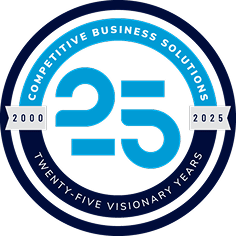
Aligning Sales and Operations for Sustainable Growth
As a business leader, one of your key responsibilities is to ensure your organization can consistently meet customer demand while maintaining operational efficiency. This delicate balance is the core of sales and operations planning (S&OP)–a cross-functional process that aligns your sales forecasts with your production and inventory capabilities.
Done right, S&OP creates a shared view of the business that allows you to make informed, data-driven decisions. However, achieving this alignment between sales and operations teams is often easier said than done.
The Inherent Tension Between Sales and Operations
Sales teams are typically driven by aggressive growth targets and a desire to win new business. Their focus is on capturing market share and delivering revenue numbers that satisfy leadership and shareholders.
In contrast, operations teams are tasked with efficiently managing the supply base, production, and inventory to meet customer demand. Their key priorities are minimizing costs, optimizing workflows, and maintaining quality standards.
This natural tension between the sales-driven “market view” and the operations-driven “supply view” can lead to significant challenges if not properly managed. Sales may over-promise on delivery times or quantities, while operations struggle to keep up. Or operations may be conservative in their production plans, leading to lost sales opportunities.
The Solution: A Structured S&OP Process
Effective sales and operations planning is all about creating a structured process to align these divergent priorities and find the optimal balance between supply and demand. Here are the key steps:
- Demand Planning: Sales provides a forecast of expected customer orders at the proper level of detail, factoring in market trends, new business opportunities, and historical data. Operations reviews this forecast, identifying potential production constraints or inventory shortfalls.
- Supply Planning: Operations develops a production and inventory plan to fulfill the sales forecast, considering lead times, capacity, and resource availability. Reconciliation: The sales and operations teams come together to discuss any gaps between the demand forecast and supply plan. They collaborate to find solutions, whether that’s adjusting sales targets, increasing production, or managing customer expectations.
- Executive S&OP Meeting: Leadership reviews the reconciled plan and makes strategic decisions around things like pricing, new product introductions, or capacity investments. Their goal is to ensure the plan supports the overall business objectives.
- Continuous Improvement: The S&OP process is regularly reviewed and refined based on performance metrics, market changes, and feedback from the cross-functional team.
The Benefits of Effective S&OP
When implemented correctly, a robust sales and operations planning process can deliver significant benefits to your organization:
- Improved Forecast Accuracy: By aligning sales and operations, you can develop a more realistic and reliable demand forecast, reducing the risk of over or under-production.
- Better Customer Service: With a clear view of your supply capabilities, you can make more accurate promises to customers and fulfill orders more reliably.
- Optimized Inventory Levels: S&OP helps you maintain just the right amount of inventory – not too much tied up capital, but enough to meet customer needs
- Enhanced Collaboration: The regular S&OP meetings foster stronger working relationships between sales, operations, finance, and other key stakeholders
- Faster Response to Change: When market conditions shift, the S&OP process allows you to adapt your plans and make informed decisions quickly.
Aligning Sales & Operations
Ultimately, effective sales and operations planning is about breaking down the silos between departments and creating a unified, data-driven approach to managing your business. By aligning sales and operations, you can drive sustainable growth, improve efficiency, and better serve your customers.
Latest Insights
Sign up to receive our latest insights!
"*" indicates required fields




